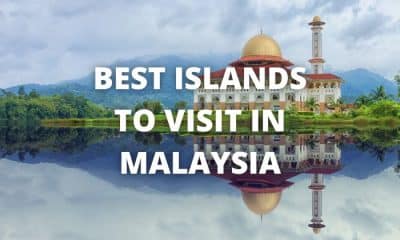Tanzania
Best Cities to Visit in Tanzania
Tanzania is a wonderful country that offers wildlife, beaches, mountains, and friendly people. Its capital city Dar Es Salaam is a cosmopolitan city on the east coast of Africa. It has beautiful architecture and plenty to do. It is also known for its vibrant crafts and fish markets.
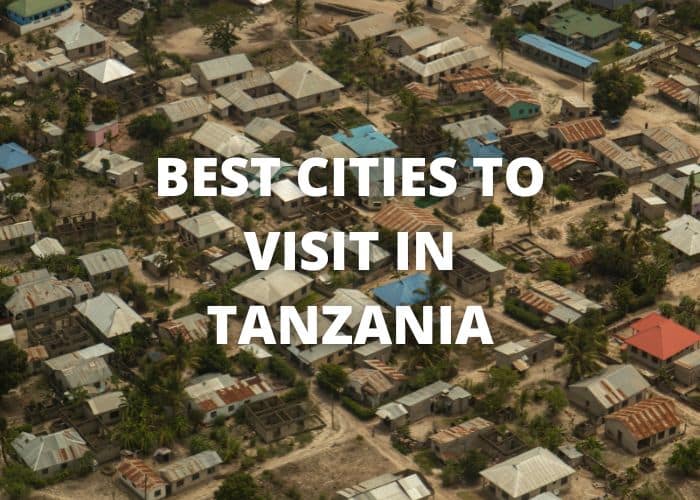
Mwanza
Mwanza is the second largest city in Tanzania and is located along the shores of Lake Victoria. The city is characterized by steep hills and rocky areas, as well as tarmac roads. The town is a popular transit point for travelers heading to Rwanda or Uganda.
The city is situated in the Tanga region, which is a diverse and interesting travel destination. Once a stop for convoys heading to the Central African hinterland, the region is now a popular tourist destination, offering a unique culture and beautiful scenery. Travelers are sure to enjoy this diverse region, as it is both safe and friendly.
Mwanza is the gateway to the Serengeti National Park and Rubondo Island National Park. It is also a great place for shopping. The Mwanza town center is lively and has a number of shops and markets. The Bismarck Rock is another popular attraction.
Travelers can reach the city by bus or by car. There are daily buses from Mwanza to Dar es Salaam and Kigoma. The journey to Dar es Salaam takes about 17 hours, including a stopover in Dodoma. Visiting Lake Victoria is also an excellent choice. The lake is 68,000 sq km in area and is home to more than 200 species of fish.
Tanzania has plenty of wildlife parks and national parks, so it’s the ideal place to go for a wildlife safari. In addition, this country is home to some of the world’s most beautiful cities. Some of these cities have a rich history, which can provide a fascinating background for your trip.
Dar es Salaam
The city of Dar es Salaam is home to many beautiful nature reserves and small parks. A short drive from downtown, you can visit the Pande Game Reserve, which is home to local butterflies, birds, and plants. Further north, you can visit the Pugu Hills Forest Reserve, which features a small lake and informative walks.
For art lovers, you can also visit the National Museum of Tanzania, which has galleries dedicated to modern art and cave paintings. The museum is situated near a botanical garden, which is more of a green, cozy park with palm trees and benches. The museum displays a diverse collection of plants native to Tanzania.
Dar es Salaam is 6.5 degrees south of the equator, so it has a relatively short rainy season. Therefore, make sure you wear protective clothing and use plenty of sunscreen. You should also bring drinking water and a hat.
The city is home to Julius Nyerere International Airport. The name of this airport is also written on its terminal. Moreover, the city’s central thoroughfare bears his name. Despite the name of the city’s international airport, the city is home to a thriving local economy.
Dar es Salaam is one of Tanzania’s largest cities, and is the country’s commercial and cultural center. Although the city doesn’t have many typical tourist attractions, its seaside location and laid-back vibe are popular with travelers. Moreover, the city offers excellent shopping and culture.
The city is also home to the Dar es Salaam Marine Reserve System. The marine reserve is a network of five uninhabited islands just south of the city. Another four islands are located north of the city. Of these, only two islands are tourist-friendly, and you can reach them in about 30 minutes by boat.
Zanzibar
There are many things to see and do in Zanzibar. You can explore the old stone town, which is home to the Old Fort. This is the oldest building in the city and is home to an open-air amphitheater, local events, and a tourist information desk. The city is also renowned for its fresh produce.
There are many beaches to visit and many tourist attractions to explore. It is recommended to stay for four nights in Stone Town to take full advantage of the island. The average cost of accommodation will be about $100 USD. Breakfast is usually included in this price. You should allow about two to three hours to explore the city.
You can visit the famous Prison Island or the beautiful Stone Town on your first day. Make sure you book a hotel in an area where you can easily access the other islands. You can also visit the famous Dhow Music Academy for a live performance. You can also spend your time at the local beach resorts.
The city has a long and interesting history. It was once the center of the slave trade and spice trade in the region. Sadly, many horrible things happened here, and you should know the history of the city before you visit. If you want to learn more about Zanzibar, you can visit the East Africa Slave Trade Exhibition.
Zanzibar is home to a variety of wildlife, including a red colobus monkey. Spices are also a big part of life in Zanzibar. There are many spice farms here, and you can sample the spices in the food. There are also a number of tours that allow you to learn more about the spices you’re eating.
Morogoro
Known for its vibrant nightlife, Morogoro is one of the best places to visit in Tanzania. The town is also close to some of the country’s best game reserves, such as the Selous Game Reserve. If you’re interested in Hindu culture, Morogoro is home to several Hindu cultural centers.
If you’re traveling to Tanzania on a budget, Morogoro is a great place to stay. The city is small, and the atmosphere is relaxed and friendly. The local market is lively and colorful, and the town’s railway station and Hindu Temple are both worth checking out. For accommodation, try Nashera Hotel, which has a lovely pool and a nice restaurant.
The Uluguru Mountains provide an idyllic backdrop for Morogoro, and the region is home to several hiking and camping safaris. Taking a walk through the area is an ideal way to get a feel for the local culture. This area is also rich in biodiversity, and you can experience a variety of wildlife and birdlife here.
When traveling to Tanzania, the best time to visit the region is during the dry season, which is June to October. This is also the peak season for national parks, so it is a good idea to book at least eight to twelve months ahead of time to make sure you’ll be able to get the best deals and accommodations. Morogoro is accessible by air, and there are flights to Kilimanjaro International Airport and Julius Nyerere International Airport.
When traveling to Tanzania, be sure to take time to see the Ngorongoro Crater, which is a UNESCO World Heritage Site. This area is home to the largest caldera in the world and is a great spot to catch the Big 5 Game. This area is full of rare species, including elephants, buffalo, and lions.
Dodoma
Dodoma is the political capital of Tanzania and is one of the most interesting cities to visit in the country. It is not as developed as other larger cities, but it still has its own glitz and glamour. It was once an important point of transportation for agricultural products to the port, and it is now a cultural, business, and political center. Its central Nyerere Square is an iconic meeting spot, and you can see many historic buildings and events here.
Dodoma is also well connected to other regions of the country. There are several bus and taxi networks, and it is near the country’s commercial hub Dar es Salaam. There are also several good lodges and guesthouses in Dodoma. You can stay in one of these high-end hotels and enjoy the city’s thriving culture. The Royal village hotel is a good choice if you want to be in the heart of the city.
The city is home to the Gaddafi Mosque, which is the largest mosque in Tanzania and the second largest mosque in East Africa. Its design and architecture have gained worldwide attention and are a popular tourist attraction in Dodoma. Visitors can take a walk through the square and see the beautiful mosque in person. Another attraction in Dodoma is the Gaddafi Mosque, built in 1982 by the Libyan leader Muammar Gaddafi. This stunning building boasts a stunning view of the city.
The city has several interesting places of worship. There is a Catholic Cathedral and an Anglican church. Both of these churches have a distinctive style and are located in central Dodoma. Visiting the mosque and churches will give you a chance to see different religious practices.
Tanzania
Best Volunteer Programs in Tanzania
In Tanzania, there are many ways to volunteer. One way is through the Love Volunteers program. The organization’s mission is to empower street children and provide them with a home. Its programs also help the local community to become self-sufficient. Its projects have been assessed for risks and are members of ABTOT, which guarantees financial protection for volunteers’ money. The organization provides school supplies, tuition fees, and fixed addresses to street children.
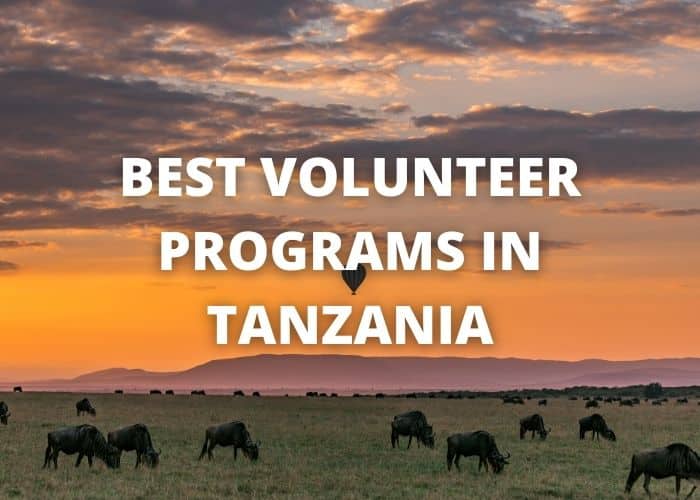
Love Volunteers
Volunteering in Tanzania is an excellent way to give back to a community and help out those in need. One of the best ways to give back is by helping out in the schools. These schools are often understaffed and have limited resources. Volunteers in Tanzania can help brighten up the day of students in these schools by engaging them in enriching games and activities. This will teach them important skills, like teamwork, fairness, and conflict resolution. Volunteers can also help with after-school programs, which are extremely valuable in poor communities.
Volunteers working for Love Volunteers in Tanzania can choose to work with a variety of different projects. For example, if you’re interested in working with children, you can volunteer with the Cradle of Love, which is a local orphanage. Volunteers in these programs will help with practical work and improve the facilities of the orphanage.
Love Volunteers is an organization with an excellent reputation in the volunteer community. They place thousands of volunteers in meaningful projects all around the world. You can choose a program that lasts for a week or up to six months, depending on your interests and availability. These volunteer projects are safe, affordable, and responsible.
Agape Volunteers is another highly rated and affordable organization. This organization focuses on low-cost volunteering programs in Tanzania and provides 24 hour support for UK-based volunteers. Their volunteers are happy with the organization and often share their experiences on social media. This organization is well known for their high quality coordinators teams and friendly atmosphere.
As the best volunteer programs in Tanzania, Love Volunteers also provides a safe environment for volunteers. A safe and healthy environment is a key component to a successful experience. The nonprofit’s staff works with local residents and organizations to help make the lives of people in these communities better.
RCDP
If you are interested in volunteering in Tanzania, then you can choose from a range of projects run by RCDP Volunteer Abroad. Most of the programs take place in the cities of Arusha and Moshi and can take as little as one week or as long as twelve weeks. Volunteers are expected to work for around 30-40 hours a week.
Volunteers can help the community by teaching English or assisting children learn their first language. In addition, volunteers may want to work as coaches for local teams or schools, which are in great need of English speakers. RCDP volunteers can also help develop local sports teams. Volleyball is a popular sport in the country, but the programs are not limited to these sports.
Volunteers in Tanzania will gain experience teaching English to disadvantaged children, helping women in their daily activities, and serving in desperately needed health and education projects. Volunteers will also be able to work with local Maasai women who are trying to make ends meet through selling their crafts to tourists. Volunteers will be able to teach these women about business, communication skills, and even basic English.
Volunteering in Tanzania can be a great way to experience the country and its people. Whether you choose to participate in a women empowerment project, a building project, or a medical mission, you will have an unforgettable experience. You’ll also have the chance to interact with local people and gain an insider’s perspective on Tanzania.
RCDP Tanzania is affordable and offers flexible program options. You can choose the length of your stay and the type of work you want to do. You’ll gain valuable experience in two interesting towns and make a real difference. It will also prepare you for working in other countries.
Projects Abroad
If you’re looking for a volunteer program that’s both meaningful and affordable, look no further than Projects Abroad. This organization provides low-fee volunteer programs to places all over the world. Volunteering with them is a great way to experience the beauty and diversity of Africa without breaking the bank.
Volunteering with them is an excellent opportunity for students, medical professionals, and those interested in developing sustainable communities. Their volunteer programs are designed to meet the needs of local communities and help them improve their health. The organization is designed for those with limited funds and offers a variety of different programs. Volunteers will work in medical clinics, health camps, and medical clinics, helping to treat sick patients and prevent disease.
Volunteering in Tanzania is a great way to experience the country’s culture and people. Whether you choose a women empowerment project or a medical mission, the program will give you an insider’s perspective on life in the country. In addition, you’ll have exceptional encounters with the locals and other volunteers. This experience will help you prepare for your future travels to other developing countries.
Whether you’re looking to travel for a few weeks or a whole year, Projects Abroad offers programs for every type of volunteer. The organization provides GAP year programs and internships, as well as programs for high school students. Whether you’re interested in teaching English, midwifery, or conservation, Projects Abroad will match you with a project that suits you.
Volunteering with Projects Abroad in Tanzania is one of the most rewarding experiences you can have! Not only is the destination safe and stable, but the people are extremely friendly and welcoming. Many of these projects are free or low-cost. You’ll need to plan your trip in advance, but there’s no need to pay to participate. You’ll have the chance to leave a lasting legacy.
IFRE
IFRE’s best volunteer programs in Africa offer a wide variety of options for people who are looking to help others. Volunteers can choose between orphanages, sports, vocational training, medical, and teaching projects. If you enjoy working with your hands and are interested in making a difference, consider volunteering in Tanzania. Volunteers in Tanzania will have the opportunity to directly support aid projects and will enjoy the satisfaction of making a positive impact on a community.
When choosing a Tanzania volunteer program, it’s essential to do your research. A bad organization can endanger your safety and ruin your experience. Many potential volunteers sign up with the first project they find, paying thousands of dollars in up-front fees for a project that doesn’t offer a quality experience.
IFRE offers a variety of volunteer programs in Tanzania that are guaranteed to change your life. Volunteers can teach English in a remote village or assist in a dolphin conservation project. They can also work on a local orphanage or promote HIV/AIDS awareness. While there, they’ll also have the chance to get to know the local people and learn about their culture.
Volunteering in Tanzania can earn you academic credit. Most internship programs can be completed for academic credit, though it’s best to pre-arrange the project with a local college or university. Depending on your program, you may need to provide additional information or do post-internship research.
Volunteering in Tanzania will provide you with hands-on experience in education, construction, and health. In addition to helping the people of Tanzania, you’ll also learn to respect others and develop interpersonal skills. This knowledge is crucial when working with local people.
Tanzania
Best Time to Visit Tanzania
There are many benefits of visiting Tanzania, but if you want to see the best wildlife, there are some times to visit that are better than others. The best times to see wildlife are late June through October when prices are lower and fewer tourists are traveling. A short dry season is also a great time to visit – there are fewer tourists and prices are lower, although you may experience the occasional bout of rain.
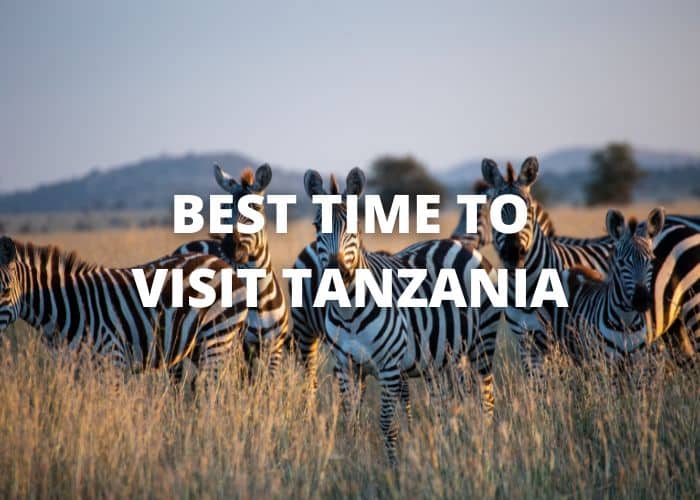
Low season
During the low season, you can enjoy the best of Tanzania’s wildlife and save a lot of money. Although the rains are short and intermittent, you can still enjoy the lush landscape and see plenty of wildlife. Despite the rainy season, you can still find discounts on hotels and flights. In addition, you can visit the parks without too many tourists.
June is the best time to visit Tanzania if you’re planning on watching the wildebeest migration, which starts in June and moves northward. The animals congregate around watering holes during this period, so it’s a good time to visit the north and west.
The Green Season occurs after the annual rains. During this time, you can see large herds of wildebeest and zebra migrating to the new grazing season. During this time, it is the best time to see these creatures and gets close to them.
Tanzania offers a wide variety of activities and attractions. You can spend your days hiking or exploring the northern circuit, or you can explore the southern parts of the country. You can also visit the famous Ruaha National Park during this time. The southern parks are crowded during the high season, and the vegetation is thicker, which can make spotting animals difficult. The temperatures can get very hot, and most of the Tanzania safari camps don’t have air conditioning, so you may be uncomfortable during the day.
The low season in Tanzania is also a good time to see the wildebeest migration, which happens in April and May. The animals are desperate for water and hide in the bushes, so you’ll find a large concentration of them near water sources. The rains are often brief and intense, but the sun comes out shortly afterward. If you plan to travel during this time, the prices are cheaper, and your chances of seeing animals are good.
Wet season
During this time of year, the weather is hot and dry in most parts of Tanzania. In the northern part of the country, there will be little to no rainfall, but in the southern and western areas, the rainy season can be quite heavy. This is why it is better to avoid the southern and western regions, such as Gombe, Mahale and Katavi, during this time.
March is the start of the long rainy season and will bring higher humidity and cloud cover. It is also the low season in Tanzania, which means fewer tourists and cheaper prices. The temperature in March will reach 30 degrees Celsius on average. Moreover, April is the cheapest month to fly to Tanzania, and hotels will offer discounts.
During the wet season, the northern circuit parks are best explored. During this time, you can witness the wildebeest migration. Other popular parks during this time include the Serengeti National Park and Ngorongoro Crater. If you are a nature lover, you can also take advantage of the scuba diving season, which lasts from early October to mid-March.
In addition, the wet season is the least crowded season in Tanzania. During this time, you can experience the best wildlife viewing in the parks. From June to July, you can also see the annual wildebeest migration, where the animals give birth to new calves. You can also visit the northern circuit parks in the winter.
If you’re a bird lover, this is the ideal time to visit Tanzania. You can watch birds, observe wildlife and experience incredible scenery at an affordable price. This country is ideal for birding enthusiasts and is home to some of the world’s greatest mountain summits.
Wildebeest calving season
The calving season is an excellent time to visit Tanzania. You’ll see hundreds of thousands of newborn calves in the Serengeti National Park and Ngorongoro Conservation Area. This region is also a popular destination for birdwatchers.
Although you can visit Tanzania any time of the year, the best time to see wildebeest migration is during the dry season, which is from late June to early October. During this season, the foliage is less dense, making it easier to spot wildlife. You can also witness the calving season in January or early March.
While the dry season has its advantages, the rainy season is not as spectacular. During this season, there are fewer safari travelers and lusher flora. In addition to fewer crowds, it’s also less expensive. A good time to visit is during this period before the high holiday season. You’ll also be able to climb Mt Kilimanjaro and view the southern Serengeti’s wildebeest.
The Ndutu area in southern Tanzania is a prime location to view the migration herd during this time. From January to February, up to eight thousand baby wildebeest are born in this area. While some of these calves die, the majority of the mother’s calves survive and disperse through the Ndutu area. During the same period of two to three weeks, the animals cross the Mara River.
A safari to the Serengeti during the calving season is the best time to see these animals. It is also the time for the Great Wildebeest Migration, which takes place across the Grumeti River in early June. During the rainy season, road conditions can become poor. Many mobile camps close during this time.
Bird-watching season
The best time to visit Tanzania is from April to October when the country’s bird-watching season is at its best. During this time, you can enjoy the most beautiful scenery, and you’ll have plenty of time to view various species. The dry season lasts from June to October, and rains fall in the afternoons, but don’t cause much disruption to your bird-watching experience. Short rains fall from November to December, but these are not a problem.
When you visit Tanzania, you’ll be able to see a variety of birds in their breeding plumages, as this is the time of year when most birds breed. The rainy season also helps to bring out the insects necessary for raising the young, making March a great time to visit the country. You’ll also have plenty of time to view the migration of the Serengeti, where the wildebeest gather in large numbers. Between July and August, you’ll be able to see games in the parks, as the land becomes drier and easier to see.
The best time to visit Tanzania is between the rainy seasons. This is the best time to view different species of birds, including the European ones. The animals also begin calving during this time, which makes this the best time to visit the parks. This is also the best time to see the Nyerere National Park.
Tanzania’s mountainous regions are ideal for bird-watching. The Eastern Arc of the country’s mountains – which includes the Udzungwa Mountains west of the Selous Game Reserve and the East and West Usambara Mountains – is a great location to observe a variety of birds. There are also several endemic species of birds in Tanzania, including the Ashy Starling and the Rufous-tailed Weaver.
Beaches season
The beaches of Tanzania are best visited during the warm, dry months from July to October. While rains can occur during the late summer and early fall months, they generally do not prevent tourists from enjoying the country’s beaches. During these months, temperatures are usually warm and sunny, making them an ideal time for beach holidays. However, you should pack warm clothing for the early mornings and evenings.
February is dry and hot, making it a good time to visit Zanzibar and the Indian Ocean coastline. Water temperatures remain between 25 and 30 degrees Celsius. During this time, you can experience the best diving in Tanzania. The weather is also warm, making it a good time for families with children.
There are several different types of Tanzania beaches. For those who love scuba diving, the best time to visit is between March and June. However, it is important to remember that the weather can be unpredictable in these months, as frequent electrical storms can disrupt the snorkeling experience. This is the most popular season for snorkeling in Tanzania. It is advisable to book your Tanzania beach holiday well in advance to avoid being disappointed.
The peak migration months of July to September are best for bird watching in Tanzania. During these months, you can view the Great Migration, which occurs during this time. Although temperatures are higher in these months, you can still enjoy the beauty of the country’s wildlife. You can also see the flamingos and hyenas during this time.
Tanzania has two distinct seasons: the Wet and Dry seasons. During the Dry season, the coast is hot and humid. This is also the best time to see wildlife, including lions and giraffes.
Tanzania
Best Places to Visit in Tanzania
The East African country of Tanzania is full of untamed wilderness areas, including the Serengeti National Park, which is Africa’s safari mecca, and the mountainous Kilimanjaro, Africa’s tallest peak. It also boasts Arabic influences in the coastal town of Zanzibar and a marine park filled with whale sharks and coral reefs on the island of Mafia.
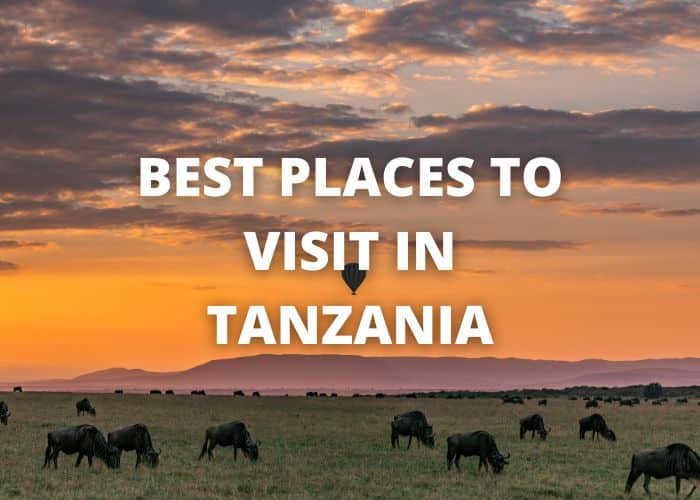
Pemba Island
If you’re looking for a relaxing getaway, visit Pemba Island in southern Tanzania. The island has beautiful white sand beaches and crystal clear waters. There’s also a historic tower that once served as a command center for foreign ships traveling through the East and South African coastlines. The tower’s symbol represents the incoming tides and signals the arrival of ships and other cargo.
Pemba is also home to 3.5 million clove trees, making it one of the most important exports of the country. The island’s forests are a haven for a variety of primates, including vervet monkeys and bushbabies. You can go on guided walks to spot and photograph these creatures.
You can also take a boat tour to explore the island on your own. The most popular beach on Pemba is Vumawimbi Beach, and it’s located on the northwestern part of the island, near the Kigomasha Peninsula and the Ngezi Forest. Another popular attraction is Misali Island, which is an uninhabited island off the west coast of Pemba. The beach offers secluded shores and shallow reefs.
Traveling to Pemba Island is best done during the dry season, when the island is free of rain. The dry season begins in November and ends in March. During April and May, there is a heavy rainy season and many lodges close down for the season.
Ngorongoro Crater
There are countless reasons to visit the Ngorongoro Crater in Tanzania. For one thing, it is a great place to see wildlife. In the dry season, many animals focus their attention on the few remaining waterholes. Also, you can enjoy birdwatching in this beautiful location.
The Ngorongoro Crater Conservation Area includes the Olduvai Gorge, which contains one of the most important hominid fossil discoveries in the world. Here, scientists found petrified human remains as early as two million years ago. These bones were studied in the mid-20th century and are now on display in the Olduvai Gorge Museum. The museum features real fossils as well as casts of early human skulls.
Although Ngorongoro Crater offers great wildlife viewing year-round, the best time to visit is during the dry season. The grasslands are less dense and the mud is less abundant. This is also the best time to see flamingos.
The Ngorongoro Crater, the world’s largest intact caldera, is located in northern Tanzania. It is home to the highest concentration of big game in Africa. Its walls rise over 610 m, while its floor spans 260 square kilometers. UNESCO declared it a World Heritage Site. The crater is home to over 20,000 Masai, a population that is largely nomadic.
Mount Kilimanjaro
There are a variety of activities available for visitors to Mount Kilimanjaro. It is one of the most popular places to visit in Tanzania. Climbers who are interested in this mountain can do so through the national park’s mountain climbing routes. The national park is also home to numerous primates and different species of plants. It is considered one of the best safari destinations in Africa.
If you’re considering an adventure vacation in Tanzania, be sure to visit Mount Kilimanjaro, Africa’s tallest mountain. At 5,895 meters above sea level, this volcanic mountain is one of the most popular destinations in the country. It is also the highest free-standing mountain in the world and the tallest mountain in Africa. Aside from its breathtaking views, Kilimanjaro also offers some of the most difficult hiking trails on Earth.
If you are looking for a way to relax after a strenuous hike, the nearby hot springs are the perfect place for you. The water is warm and the trees surrounding the area offer a relaxing experience. This location is also ideal for setting up camp.
Ruaha National Park
If you love nature and the great outdoors, you’ll love visiting Ruaha National Park in Tanzania. The park boasts more than a hundred species of plants and animals. Its landscape is characterized by undulating plains, treeless grasslands, and sweeping escarpments. It’s also home to countless crocodiles and large herds of elephants.
During the dry season, wildlife concentrates around a few remaining watering holes. But pockets of the park enjoy great game viewing year-round. In these pockets, you’re likely to see little to no other people on your safari. It’s also possible to enjoy a game drive in the morning. Guests can also enjoy walking safaris, which allow them to get closer to the wildlife.
In addition to wildlife viewing, Ruaha National Park has excellent accommodations for tourists. There are several lodges and camps located inside the park. Most of them cater to travelers of different budgets and needs. Choose from the Magangwe Tented Camp, the Kichacka Camp, the Mdonya Old River Camp, and the Mwagusi Safari Camp.
If you’re looking for an affordable safari in Tanzania, Ruaha is a fantastic destination. The park is home to a diverse variety of wildlife, including the largest population of African wild dogs outside the Serengeti-Mara. The park also has a rich bird population and is the best place to spot lions.
Mto Wa Mbu
This rural village is a cross-cultural melting pot with over 120 distinct tribes. Visitors can experience these differences by listening to the colorful blend of languages and customs. Visitors can also observe the various entrepreneurial activities. For example, one farmer may produce palm oil from the palm trees on his land, while another might create colorful baskets and mats from papyrus.
Mto Wa Mbu is a thriving village located in northern Tanzania. It is a popular stopover point for tourists touring the Serengeti National Park, Ngorongoro Crater, and Tarangire National Park. The town also borders the Lake Manyara National Park.
Mto Wa Mbu is a great place to see a wide variety of wildlife. This region is home to colobus monkeys, baboons, and hundreds of different cichlid species. The lakes of Tanzania may contain the greatest diversity of freshwater fish on the planet.
The Ruaha National Park is Tanzania’s largest national park and is the largest protected area in East Africa. This area has a small population of tourists, which means that accommodations are limited. The area is home to a large diversity of migratory and resident animals, including the critically endangered black rhinoceros. You’ll also find a wide variety of birds in this park. The park is also a great place to do fly camping.
Stone Town
The Stone Town area of Zanzibar is filled with local culture, history, traditions, and spices. If you’re staying in the area, try a stay at one of the many hotels in town. You can stay at the luxurious Park Hyatt Zanzibar, or choose from a range of affordable hotels, including the Doubletree By Hilton Zanzibar and the Mizingani Seafront Hotel.
The town itself is filled with alleyways, and the town is alive with bustling activity. You’ll see gorgeous carved wooden doors, vibrant African oil paintings, and street food vendors. If you’re a foodie, you might also want to visit the Shark Corner.
While Islam is the dominant religion in Zanzibar, you can still find some Hindu and Christian churches in Stone Town. The Shakti Temple and the Malindi mosque are especially striking. The Malindi mosque is Zanzibar’s oldest mosque. You can also visit the 19th century Anglican Cathedral, which was built close to one of the largest slave markets in the world.
You can also spend some time shopping at the local markets. You’ll find some of the country’s best souvenirs in Stone Town. Many of the products are handmade by women, especially those from the Masai tribe. When you buy these souvenirs, you’ll be supporting local women and their communities. In addition to shopping, don’t miss out on the Darajani market, which is the island’s largest food market. You’ll find enormous selections of fish, meat, and vegetables for sale.
Unguja
The best time to visit Unguja is between June and October, when it is cooler and the climate is not as hot. Alternatively, if you prefer the more humid climate, you can visit Unguja between December and February, when temperatures are pleasantly high. Although the climate in Unguja is generally good throughout the year, it does have two rainy seasons: the long rainy season, from March to May, and the short rainy season, between November and December, which is not nearly as hot.
There are many things to do in Unguja, including diving, snorkeling, and playing in the clear water. You can even go dolphin-spotting or try kite-surfing, depending on your level of expertise. There are a number of beaches to choose from as well, including the world-famous Nungwi Beach, which is located on Zanzibar Island. Another beach in Unguja is Matemwe, which is an amazing place to snorkel and enjoy the crystal-clear waters. If you are more adventurous, you can also visit Misali Beach, which offers unique diving.
If you’re traveling to Tanzania on a budget, don’t miss Zanzibar Island. This archipelago has over 250 islands totaling 236 square miles. The largest island is Unguja, and the capital is Zanzibar City, also known as Stone Town. The island is a semi-autonomous part of Tanzania with its own president elected every five years. It is also known as the Spice Coast because of the many spices grown there.
-
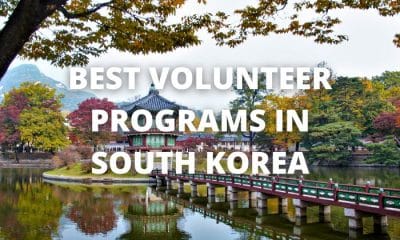
 South Korea3 years ago
South Korea3 years agoBest Volunteer Programs in South Korea
-
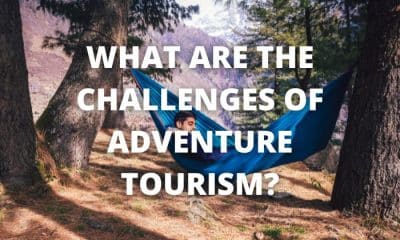
 Adventure Travel2 years ago
Adventure Travel2 years agoWhat Are the Challenges of Adventure Tourism?
-

 Volontariat à l'étranger3 years ago
Volontariat à l'étranger3 years agoVolontariat Thaïlande
-

 Freiwilligenarbeit im Ausland3 years ago
Freiwilligenarbeit im Ausland3 years agoFreiwilligenarbeit Thailand
-

 Vrijwilligerswerk3 years ago
Vrijwilligerswerk3 years agoVrijwilligerswerk Thailand
-

 Adventure Travel2 years ago
Adventure Travel2 years agoTypes of Adventure Tourism
-
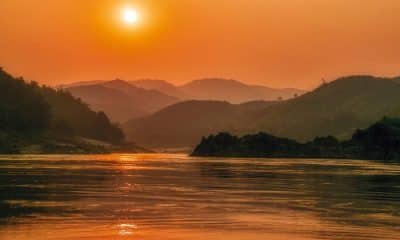
 Freiwilligenarbeit im Ausland3 years ago
Freiwilligenarbeit im Ausland3 years agoFreiwilligenarbeit Laos
-

 2 years ago
2 years agoTop 10 Best Cities to Live in the World (2023) World’s Best Places to Live












